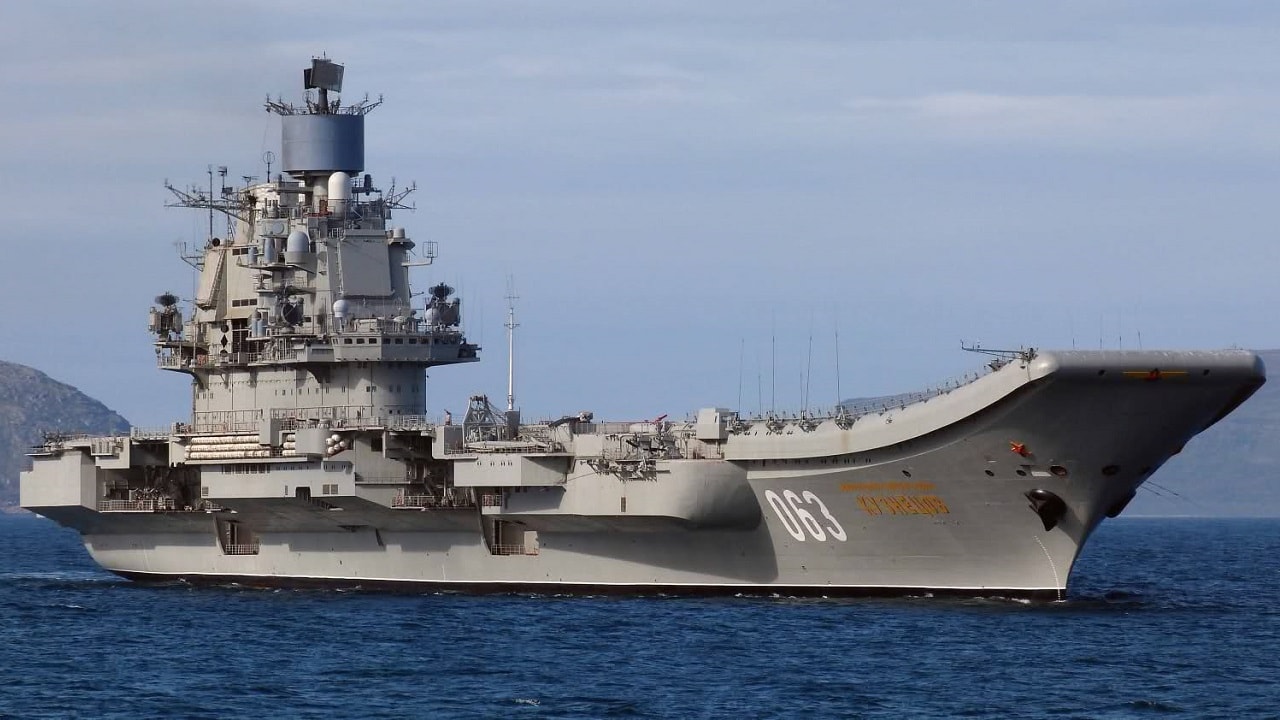Russia’s only aircraft carrier, the Admiral Kuznetsov, seems to be in for a forever refit: Those who expected to see the only Russian aircraft carrier on the seas soon are in for a surprise as the vessel is still plagued by issues.
Admiral Kuznetsov is still at least a year out before rejoining the Russian combat fleet, according to Russian military sources who talked to Russian state media. The vessel is currently undergoing repairs and modernization work that seeks to extend its life for an additional 10 to 15 years.
Where’s the Russian Aircraft Carrier?
For years, the sole Russian aircraft carrier has been plagued by mechanical breakdowns and maintenance woes. The U.S. and Western sanctions imposed on Russia are certainly to delay the work on the Admiral Kuznetsov even further.
“The transfer of the Admiral Kuznetsov cruiser to the fleet after modernization and all subsequent state tests will take place no earlier than in 2024,” the Russian state media TASS reported.
The Russian Navy is designating Admiral Kuznetsov as a heavy aircraft carrier cruiser, and the vessel can carry approximately 24 fighter jets and 12 helicopters; the Russian aircraft carrier is also packing 12 P-700 anti-ship cruise missiles and almost 200 3K95 “Kinzhal” surface-to-air missiles.
The sole Russian aircraft carrier is a Short Take-Off, Barrier Arrested Recovery (STOBAR) flattop that uses a ski-jump, an upward curving ramp at the front of the warship, to assist aircraft in taking off for its deck.
In addition to STOBAR flattops, there are Catapult Assisted Take-Off Barrier Arrested Recovery (CATOBAR) aircraft carriers, which have a flat deck and use a catapult to launch and recover aircraft. All of the U.S. Navy’s flattops are CATOBAR.
Laid down in 1982 and launched three years later in 1985, the Admiral Kuznetsov is the Russian Navy’s flagship. However, from the start, the sole Russian aircraft carrier was hamstrung by its design. In order to make it more efficient and cheaper, the Russian Navy opted to power the aircraft carrier with Mazut, an oil byproduct that produces thick, toxic smoke. But that very smoke makes the ship visible from miles, increasingly its vulnerability.
The Russian Navy
The Russian Navy comprises four fleets: Pacific Fleet, Northern Fleet, Baltic Fleet, Black Sea Fleet (which has been in the news a lot lately because of the war in Ukraine), and one flotilla, the Caspian Sea Flotilla.
The Russian Navy has two primary mission sets: strategic deterrence through its nuclear capabilities and homeland defense. And although it has the capability to conduct global deployments, it can do so at a much smaller scale than the U.S. Navy.
Before the war in Ukraine started, the Russian Navy had approximately 130,000 personnel and about 32 major surface vessels, including Admiral Kuznetsov, two battlecruisers, one cruiser, 12 destroyers, and 11 frigates. But now, these forces have been somewhat depleted, especially after the sinking of the missile-guided cruiser The Moskva by the Ukrainians.
In addition to those major surface combatants, the Russian Navy can deploy a larger number of smaller vessels, including corvettes, minesweepers, and patrol boats.
Furthermore, the Russian Navy can field 70 submarines of various ages and capabilities.
1945’s New Defense and National Security Columnist, Stavros Atlamazoglou is a seasoned defense journalist specializing in special operations, a Hellenic Army veteran (national service with the 575th Marine Battalion and Army HQ), and a Johns Hopkins University graduate. His work has been featured in Business Insider, Sandboxx, and SOFREP.

